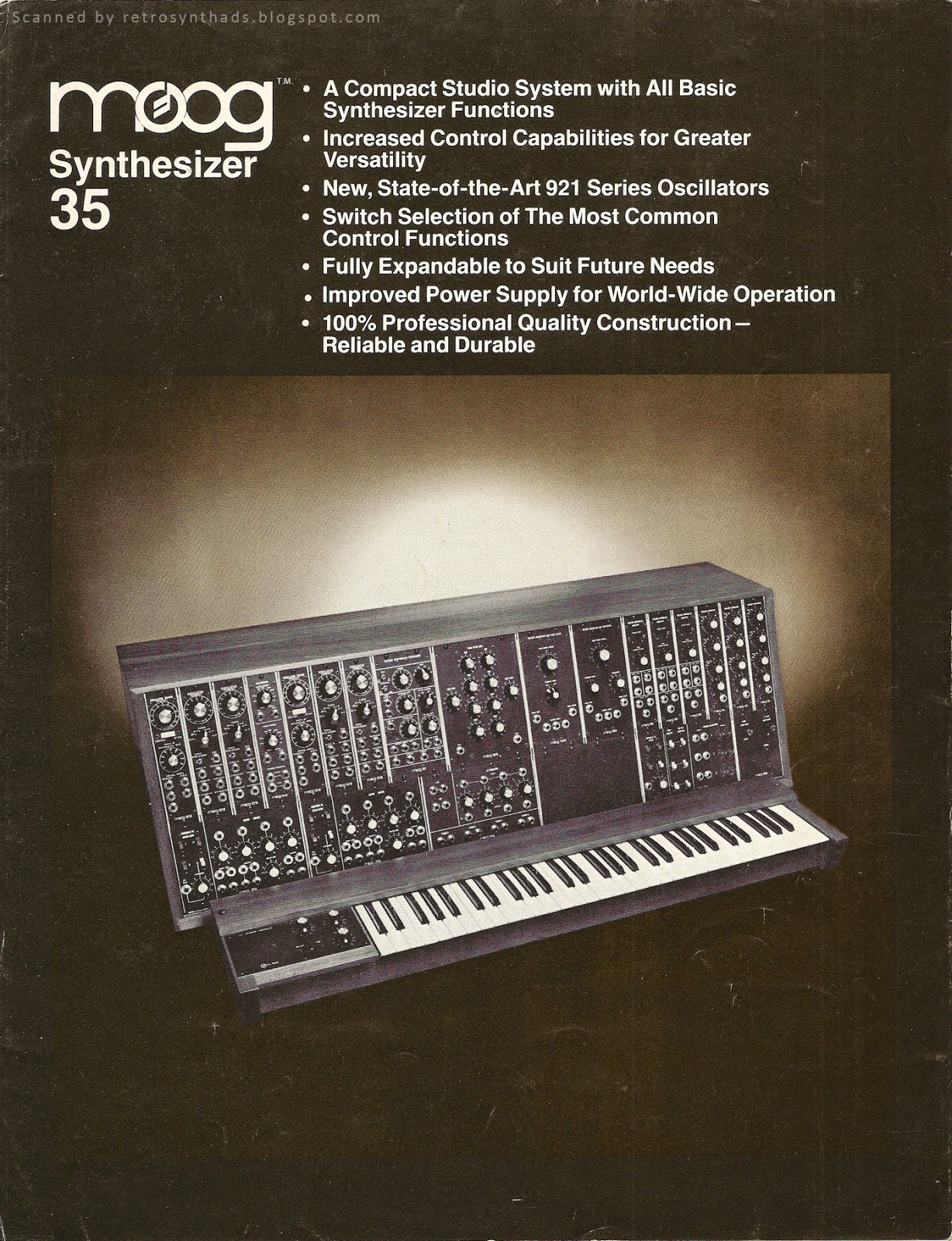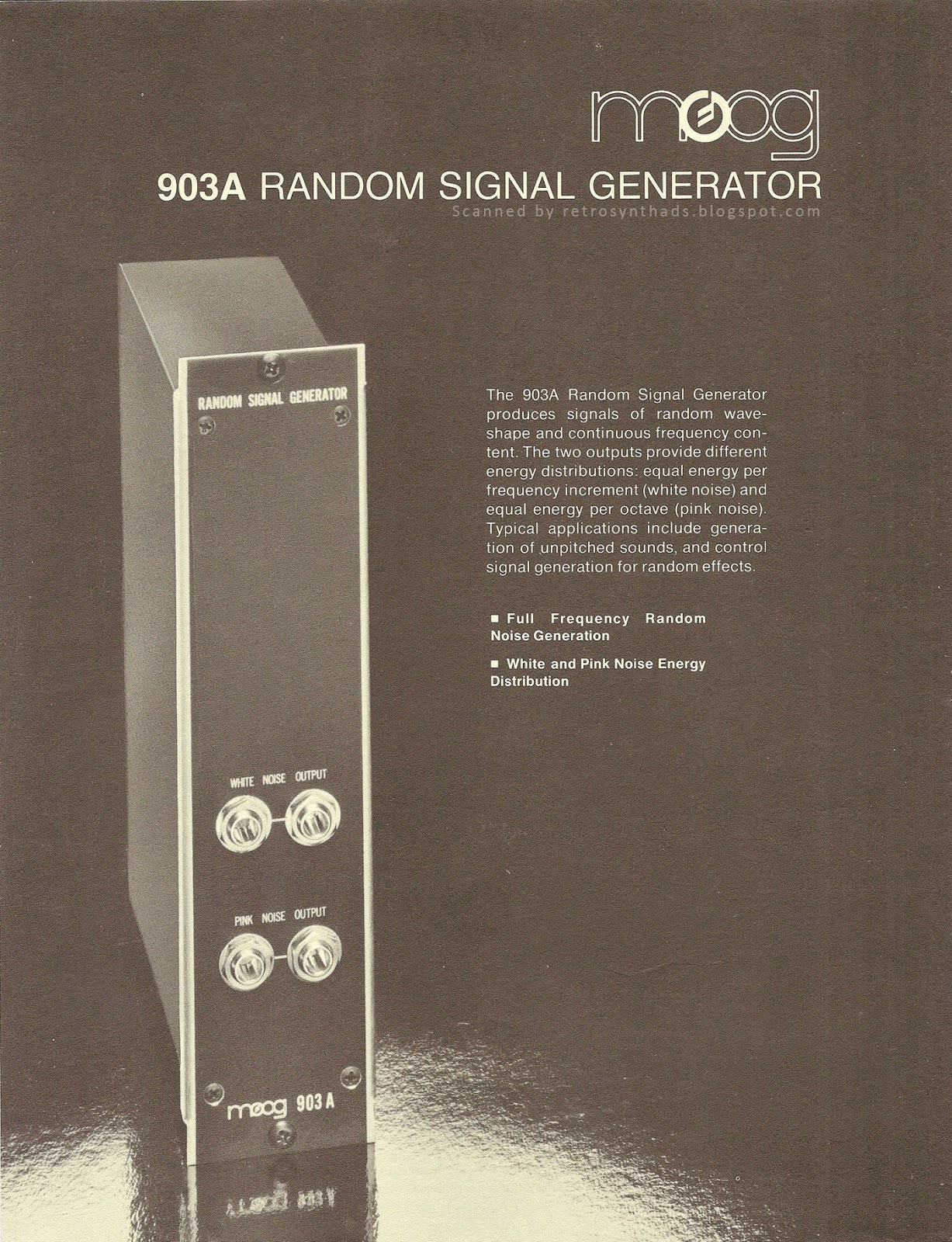Moog 921 Voltage Controlled Oscillator four page brochure from 1974.
Last week I posted the brochure for the 921a/b VCO bank from the same series. This 921 VCO is like the Simon to the Garfunkel of the 921a/b bank. The Captain to the Tennille.
Actually, maybe I should be using synthpop references. The Annie Lennox to the Dave Stewart of Eurythmics. The Vince Clarke to the Alison Moyet of Yazoo. The Neil Tennant to the Chris Lowe of Pet Shop Boys. The Marc Almond to the Dave Ball of Soft Cell. The Rob Fisher to the Peter Byrne of Naked Eyes. The Neil Authur to the Stephen Luschombe of Blancmange.
Okay, think I milked that one. Point is, chances are you will find both 921s and 921a/b banks making beautiful music together in a Moog Modular.
I mentioned
in my last post how researched seemed to indicate that the 921 series came to be in part because the Moog Modular was transitioning from an experimental machine found mostly in music "labs" to that of a musical instrument to be found in some of the top professional recording studios. In particular, the 901 series was replaced by the 921 series with their better temperature stability, tracking accuracy and extra functionality - requirements when trying to churn out the next top 40 hit.
But these modulars were highly technical machines. And they required some technical knowledge to get up and running (and keep going). Thus, this brochure is NOT marketing Moog modules to the average musician. And I'm not even sure if its directed towards the average studio tech either, although I wasn't hanging around in studios back in 1974 so can't really comment to their technical knowledge. The highly technical content leads me to believe this series of brochures was still being targeted towards the music lab gurus - and probably only the ones with the whitest lab coats, biggest pocket protectors and (in reference to the men) the biggest beards.
Aside: before you knock me for my nerd-bashing, I will have you know that I wear a pocket protector every day at work, and usually a different every day. Geeez - how else do people protect their pockets these days?!?! So, if you have any vintage (or new!) pocket protectors, please contact me! I'm serious.
Back to the point... were was I... oh yeah... targeted audiences.
To make my point, let's compare this brochure to the marketing material of another one of Moog's legendary products - the Minimoog.
 |
| Minimoog |
No text whatsoever. :)
Yeah, I know - silly comparison. By 1979, the Minimoog was such a standard tool in the studio that not only did it not need more than 10 words of marketing content, but Moog didn't even have to slap a logo in their ad. So, okay, a totally shitty comparison.
A better comparison might be Minimoog's 1972 brochure. Here's the inside scan that links to the blog post.
So, this Minimoog brochure was printed TWO YEARS before the 1974 921 VCO brochure.
Let's compare the first real line of content of the two brochures:
921 VCO
"The 921 Voltage Controlled Oscillator generates periodic waveforms within a total frequency range from .01 to 40,000 cycles per second."
Minimoog
"Brutal, caustic, volcanic - Evocative, flirting, caressing - crisp, powerful, biting - Entrancing, embracing, exhilarating!"
Yup. Definitely different audiences. :)
That 921 VCO brochure content is definitely targeted towards those pocket-protected white-lab-coat-wearing music technicians while the text in that Minimoog brochure was obviously meant for the tight-shiny-gold-pants crowd.
To be fair, there was some cross over between these two groups. And I have to say, those men and women in the lab coats *and* tight gold pants were definitely the most awesome.
I'm not saying Moog didn't create modular marketing material for a musician audience, I'm just saying this series of brochures was definitely not.













































